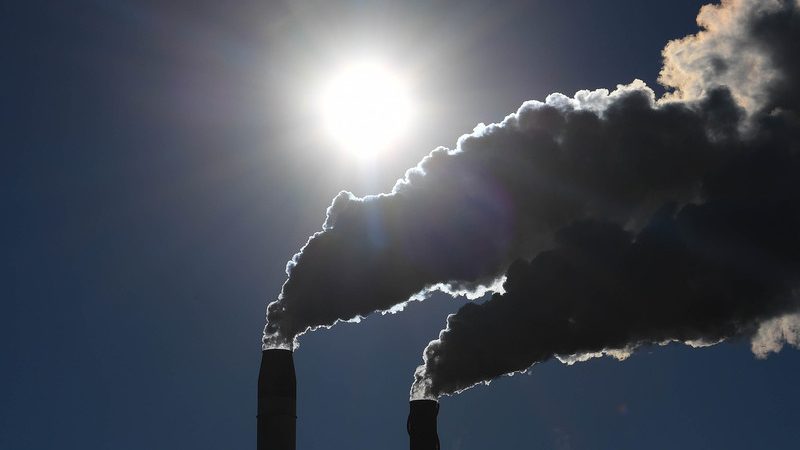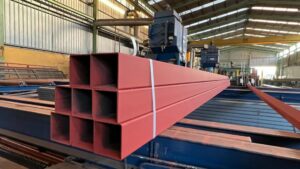Six options have been considered for the European Commission’s implementation of a Carbon Border Adjustment Mechanism (CBAM), according to a draft circulated July 12 by Contexte, a French media organization. One of the options proposes a 10-year phase-out from 2026 of allowances that can be obtained for free by less-polluting EU steelmakers and aluminum producers under the EU Emissions Trading System.
The EC is set to make initial proposals for the CBAM July 14, for implementation in 2023, as part of a “Fit for 55” package of measures to slash the bloc’s carbon emissions by 55% of 1990 levels by 2030. The CBAM will target emissions in “hard-to-abate” sector including steel, aluminum, cement and electricity.
The first CBAM option considered is for an import carbon tax, paid by the importer when products enter the EU, according to the text of the leaked document. The tax would be collected by customs at the border, reflecting the price of carbon in the EU combined with a default carbon intensity of the products. Importers would have the opportunity to claim a reduction of the CBAM based on their individual carbon footprint and any carbon price paid in the country of production.
The second option reportedly involves the application on imports of a system that replicates the EU ETS applicable to domestic production. Similar to the EU ETS allowances system, this would involve surrendering “CBAM certificates” by importers, based on the embedded emission intensity of the products imported, and purchased at a price corresponding to that of the EU ETS allowances at any point in time.
The third option bases the carbon price of imports on actual emissions from third country producers rather than on a default value based on EU producers’ averages, involving the importer reporting the actual emissions embedded in the product and surrendering a corresponding number of CBAM certificates, according to the document.
Option four consists of surrendering CBAM certificates on imported products. This considers a 10 years transitional period starting at the earliest in 2026 during which free allocations of allowances under the EU ETS would be gradually phased out by 10 percentage points each year as the CBAM is phased in.
“The combined and transitional application of EU ETS allowances allocated free of charge, of indirect cost compensation of carbon costs passed on electricity prices and of the CBAM should in no case result in more favourable treatment for EU products compared to imported goods,” the text of the document says. “CBAM certificates differ from EU ETS allowances for which tradability is an essential feature and whose prices fluctuate on a daily basis.”
Option five would cover carbon-intensive materials that are part of semi-finished and finished products along the value chain. For imports, the CBAM would again be based on the actual emissions from third country producers.
Option six consists of an excise duty on carbon-intensive materials covering consumption in the EU of both domestic and imported products, besides the continuation of the EU ETS including the free allocation of allowances covering production in the EU.
All six options have been considered potentially effective in the aim to reduce carbon emissions in the EU and address the risk of carbon leakage, according to the document.
“While the objective of the CBAM is to prevent the risk of carbon leakage, this Regulation is expected to also encourage the use of more GHG-efficient technologies by third countries producers, so that less emissions per unit of output are generated,” it said.
Questioned on the proposals, an EC spokesperson said July 12 that the Commission “does not comment on leaks.”
Allowances in short supply
European Steelmakers’ Association Eurofer said July 12 it is “particularly concerned” at the EC’s apparent intentions for the EU ETS revision, and calls for the CBAM and ETS to be complementary systems. “The steep reduction of free allocation would markedly increase industry exposure to EU ETS costs. The ‘rebasing’ and Market Stability Reserve changes would artificially drive up the carbon price for the same level of 2030 climate ambition,” Eurofer stated.
“Artificially higher carbon costs would hinder the steel sector’s ability to reduce emissions and meet our targets. Even before the current EU ETS revision, the sector was facing Eur30-45 billion in EU ETS costs between 2021-2030,” Eurofer Director General Axel Eggert was cited as saying in the statement. He noted that this calculation is based on the current EU ETS allowance price of Eur55, which has the potential to rise to Eur100 per allowance due to current shortages in availability under the regime finalized in 2018.
— Diana Kinch and William Healy






